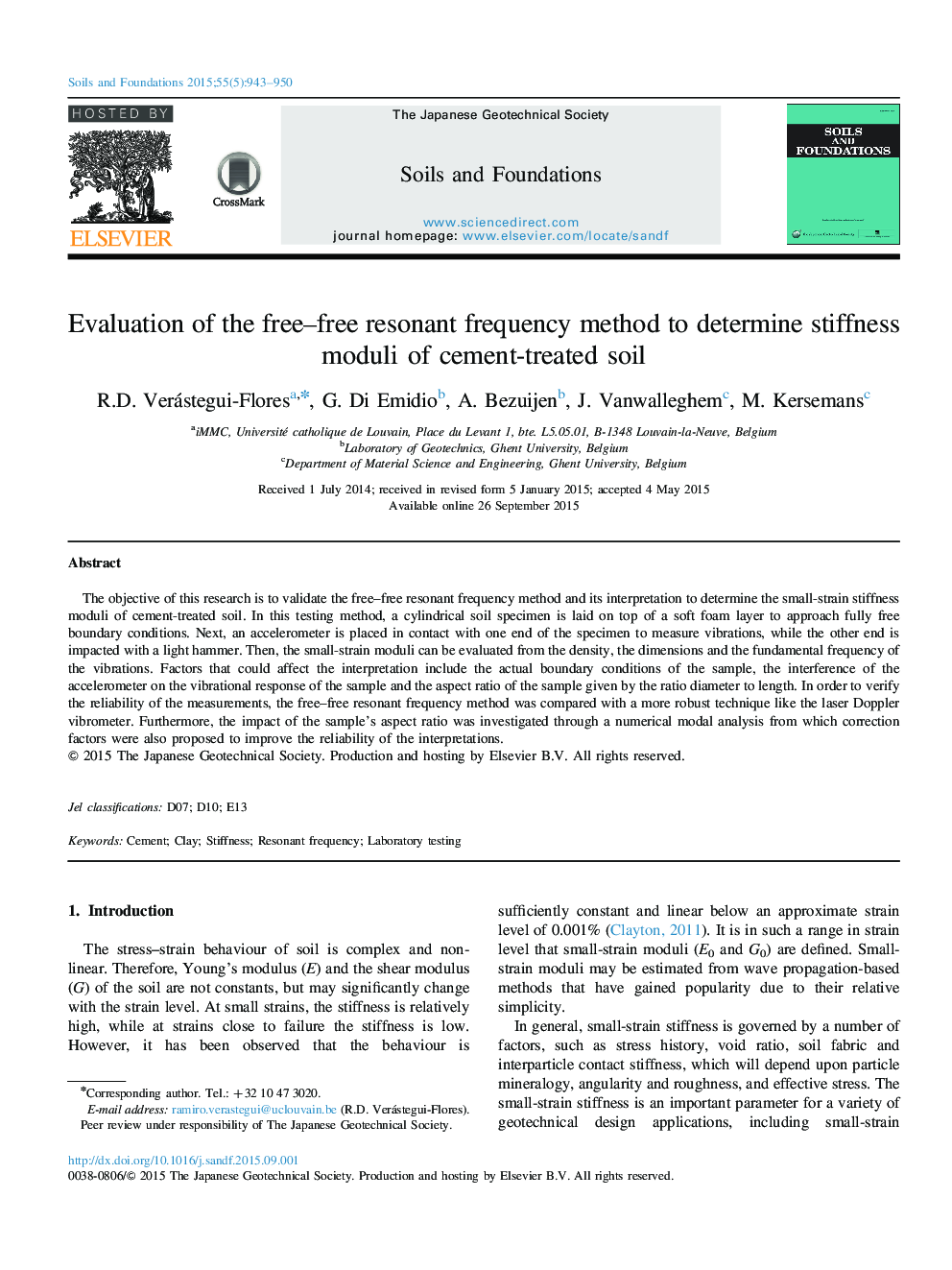| Article ID | Journal | Published Year | Pages | File Type |
|---|---|---|---|---|
| 307079 | Soils and Foundations | 2015 | 8 Pages |
Abstract
The objective of this research is to validate the free-free resonant frequency method and its interpretation to determine the small-strain stiffness moduli of cement-treated soil. In this testing method, a cylindrical soil specimen is laid on top of a soft foam layer to approach fully free boundary conditions. Next, an accelerometer is placed in contact with one end of the specimen to measure vibrations, while the other end is impacted with a light hammer. Then, the small-strain moduli can be evaluated from the density, the dimensions and the fundamental frequency of the vibrations. Factors that could affect the interpretation include the actual boundary conditions of the sample, the interference of the accelerometer on the vibrational response of the sample and the aspect ratio of the sample given by the ratio diameter to length. In order to verify the reliability of the measurements, the free-free resonant frequency method was compared with a more robust technique like the laser Doppler vibrometer. Furthermore, the impact of the sample's aspect ratio was investigated through a numerical modal analysis from which correction factors were also proposed to improve the reliability of the interpretations.
Related Topics
Physical Sciences and Engineering
Earth and Planetary Sciences
Geotechnical Engineering and Engineering Geology
Authors
R.D. Verástegui-Flores, G. Di Emidio, A. Bezuijen, J. Vanwalleghem, M. Kersemans,
